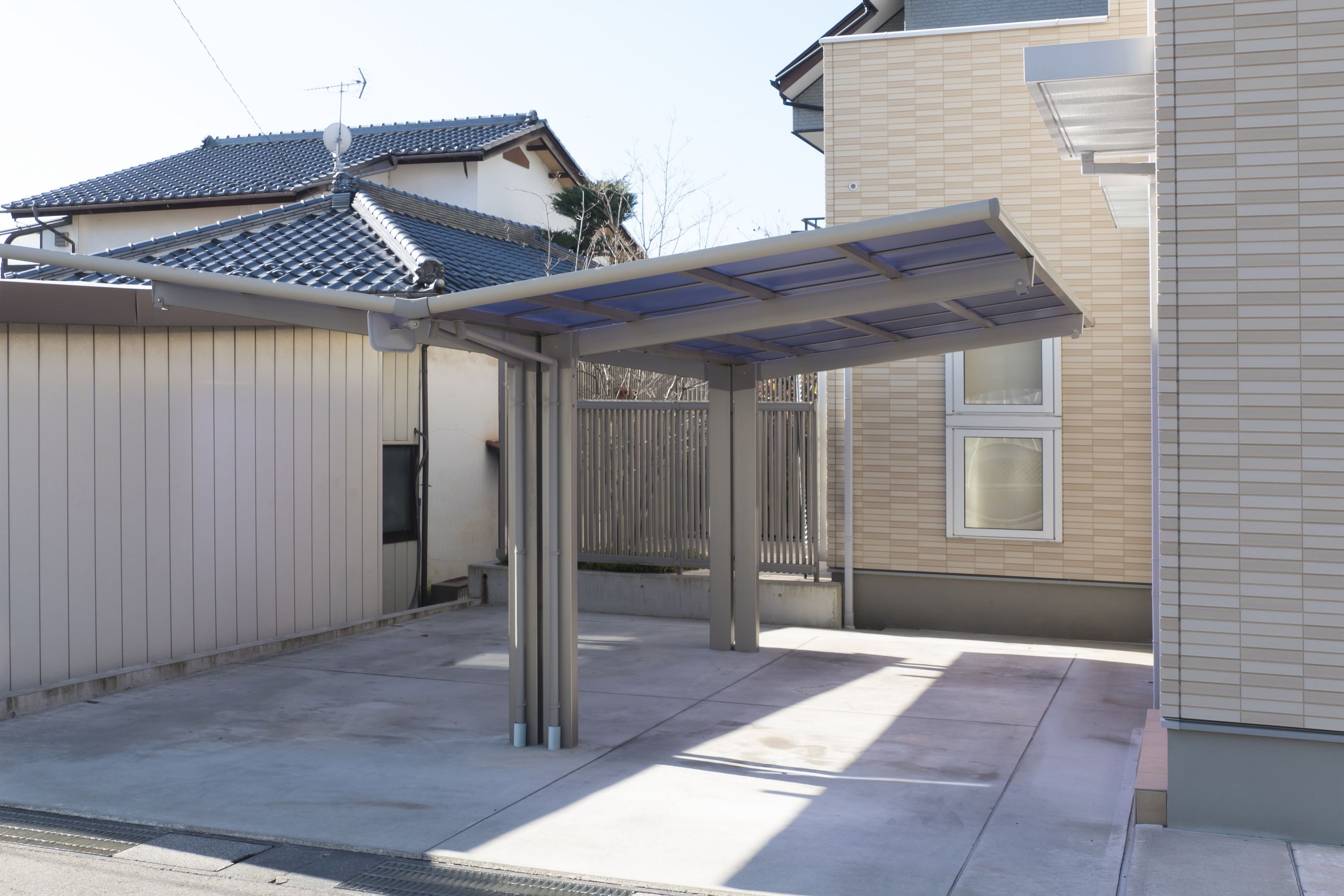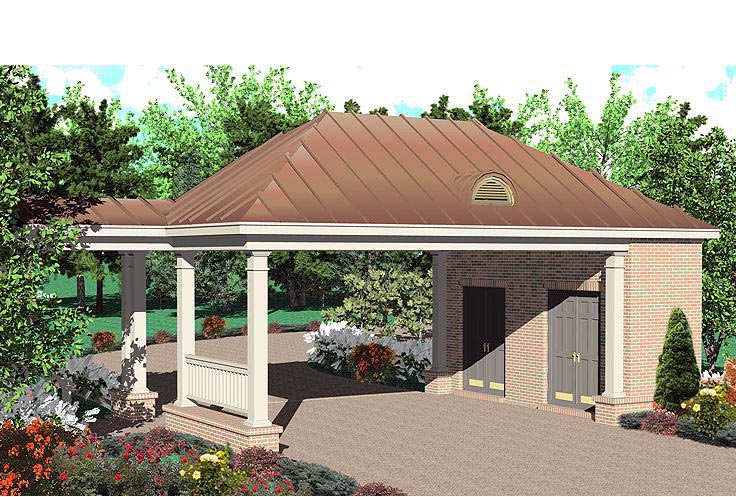This step by step diy woodworking project is about how to build an attached carport. If you want to learn how to build a carport attached to an already existing building, we recommend you to pay attention to the instructions described in the article and to check out the related projects. An attached construction is ideal for any property, as it will protect your car from bad weather but it also provides the convenience of proximity to the house. There are many carport projects featured on our site, so don’t be afraid to browse through the rest of the woodworking plans.
In most of the cases, a building permit is required so make sure you go to the town hall and ask information about the legal requirements you have to comply with. In this manner, you will also find out useful details about your carport construction. When building the carport, you should make sure the plans are detailed and come with step by step instructions, as well as with a complete list of the materials.
It is essential to invest in high quality materials, that are also water-resistant, such as pressure-treated lumber. Cut the components at the right size by using a circular saw and smooth the cut edges with a sand block. Don’t forget to ask a skilled friend to assist you during the project, especially if you don’t have a large expertise in the field. You need someone to hold the components into place, while you drive the screws in.
Doug and I built a carport. SUBSCRIBE for a new DIY video weekly! I have designed these free. To secure the walls of the carport, you'll basically build a simple rectangular box approximately 16 feet (4.9 m) long, nine feet wide, and roughly seven feet high, secured onto the posts. Secure two supporting crossbeams flat on the top of the shorter corner posts and extend to the higher corner posts about two feet down from their tops. This attached carport is ideal for sheltering your car against the elements. In addition, you will save a lot of money by attaching it to an already existing building. This attached carport is based on trusses and on a sturdy 6×6 post structure.

Made from this plan
How to build an attached carport

Materials
- A – 3 pieces of 4×4 lumber – 84″ long POSTS
- B – 2 pieces of 2×6 lumber – 216″ long SUPPORT BEAMS
- C – 1 piece of 2×8 lumber – 216″ long SUPPORT BEAM
- D – 30 piece of 1×4 lumber – 131 1/4″ long RAFTERS
- E – 1 pieces of 1×6 lumber – 216″ long TRIM
- F – 25 pieces of 1×6 lumber – 216″ long ROOFING
- G – 4 pieces of 4×4 lumber – 34″ long BRACES
- post anchor, tube form, concrete
- 2 1/2″ screws, rafter ties
- roofing felt, asphalt shingles
Tools
Tips
- Use a good miter saw to make the angle cuts
- Drill pilot holes before inserting the screws
Time
- One Week
Related
Building an attached carport
Laying out the posts
The first step of the project is to layout the attached carport in a professional manner. Therefore, we recommend you to use batter boards and string to mark the outline of the posts. Adjust the size of the carport to suit you needs.
Dig 3′ deep holes and fit tube forms, after compacting a 2″ gravel layer on the bottom of the holes. Use temporary braces to lock the posts into place. Make sure the 4×4 posts are perfectly plumb before filling the tube forms with concrete. Level the surface and let the concrete dry out for a few days.
Fitting the support beams
Build the support beams out of 2×6 lumber. Cut them at the right size and clamp them to the top of the posts. Use a spirit level to make sure the beams are horizontal. Drill pilot holes through the beams and through the posts before inserting 7″ carriage bolts.
Simple Carports You Can Build
If you live in an area with strong wings, we recommend you to attach 4×4 braces to the structure, as described in the diagram. Cut both ends of the braces at 45 degrees and secure them to the structure by using 2 1/2″ screws. Check if the posts are vertical before inserting the screws.
Fitting the support beam
Next, you need to attach the 2×8 support beam to the building. Take accurate measurements, as the height at which you place the beam will influence directly the slope of the roof. Level the beam with a spirit level, drill pilot holes and insert lag bolts into the building to create a rigid bond.
Cut both ends of the 2×6 rafters at 77.5 degrees and smooth the edges with fine-grit sandpaper. Make sure the rafters are perfectly straight and the lumber is in a very good condition.
Fitting the rafters
Attached Carports
Next, you have to secure the rafters to the support beams, at both ends. In order to create rigid bonds, we recommend you to use appropriate hardware on both joints. Leave no gaps between the components and make sure they are locked together tightly.
Attach the 1×6 trim to the ends of the rafters in order to build a carport with a neat appearance. Align the edges with great care and secure the trim to the rafters by using 1 1/2″ finishing nails.

Fitting the roofing
Building the roof for the carport is the next step of the outdoor project. In order to get a professional result, we recommend you to use 1×6 slats and to install them to the rafters starting with the bottom up to the top. Use galvanized screws and make sure the slats overlap at least 1 1/2″ before driving in the nails. In this manner, the head of the screws will be protected from moisture by the upper slat.
The diagram shows more information regarding the installation of the roofing slats. Make sure the edges are aligned before inserting the finishing nails.
How to build an attached carport
Last but not least, we recommend you to take care of the finishing touches. Fill the holes with wood filler and let it to dry out for several hours. Don’t forget to check out the rest of the carport plans, as there are several alternatives to choose from.
How To Build An Attached Carport To A House
Thank you for reading our project about how to build an attached carport and we recommend you to check out the rest of the projects. Don’t forget to LIKE and SHARE our projects with your friends, by using the social media widgets. SUBSCRIBE if you want to be the first that gets our latest articles.